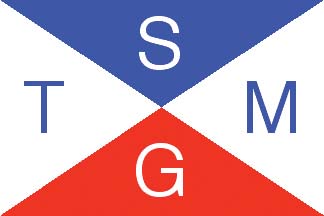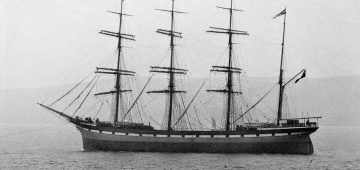S. G. T. M.

 The vacuum, that Napoleon I left France in his wake, saw a country in political turmoil for the rest of the 19th century, being split into two camps, the radical liberals and the conservative monarchists. The country interspersed with a series of internal revolutionary outbreaks and an embarkation of military expansionism outside its borders, while at the same time huge advances in industry, medicine and the arts were taking place.
The vacuum, that Napoleon I left France in his wake, saw a country in political turmoil for the rest of the 19th century, being split into two camps, the radical liberals and the conservative monarchists. The country interspersed with a series of internal revolutionary outbreaks and an embarkation of military expansionism outside its borders, while at the same time huge advances in industry, medicine and the arts were taking place.
These often troubled times engulfed the underprivileged, hungry, and war weary peoples of Southern Europe and led to a mass migration by sea in the 20 years either side of 1900.
After the events of 1815, the government and its military establishment were determined to regain an empire and influence. In 1830 France invaded Algeria, creating a foothold in what became the start of the Franco speaking empire on the continent, their continued expansion continued by invading Senegal in 1850, and eventually spreading as far south as the Congo. Algeria became an administrative department, run and settled not as a colony but as an extension of France itself.

For this they needed a large infrastructure of transport systems, to trade and service the needs of the garrisons of troops and settlers. In this period of French history, their influence also expanded into Indo China (1859), Guyana and Polynesia. This was followed by a disastrous foray into Mexico which ended in 1867. Within three years they were at war with the Prussians in 1870-71 who lay siege to Paris. After this the French Army redoubled its efforts to regain overseas prestige. The turmoil led to the abdication of Napoleon III in 1873, and the creation of the 3rd Republic.
Against this background Société Générale de Transports Maritimes (S.G.T.M.) of Marseilles, was created on 18th March 1865, with a capital of 20 million francs. It would become one of the most important shipping companies based at the country’s premier port in the Mediterranean. The company’s founder was one of the country’s leading industrialists of the era, Paulin Talbot, who had founded the P. L. M. (Paris-Lyon-Mediterranean) railway. The shipping company had secured a 13 year contract to transport 120,000 tons of iron ore each year, from the mines at Mokta-el-Hadid, near Bone to Marseilles or Sete. On 7th April l865 the company ordered nine ships, each of 1,200 of deadweight tons, from Forges et Chantiers de la Mediterranee at La Seyne, thus creating the shipping arm of this industrial empire. The next year he expanded the company’s operations by starting a passenger service from Marseilles to Algiers and Oran with four second hand vessels.
Subscribe today to read the full article!
Simply click below to subscribe and not only read the full article instantly, but gain unparalleled access to the specialist magazine for shipping enthusiasts.






Comments
Sorry, comments are closed for this item